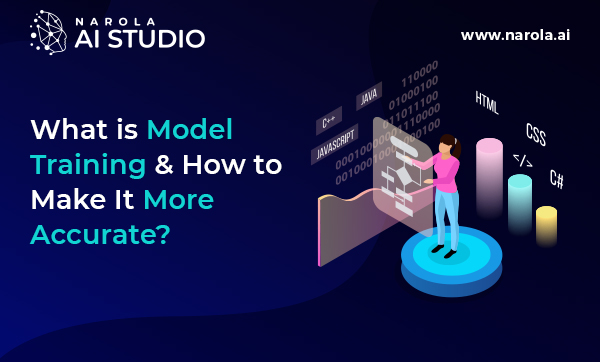Tips for Model Training to Maximize Machine Learning Potential
 Narola AI Studio
Narola AI Studio
Model training is a key procedure in machine learning that converts unprocessed data into useful insights. This article explores the fundamentals of model training and provides tips on how to improve your models' accuracy.
In machine learning, feeding an algorithm a dataset to train it to make predictions or judgments is known as model training. The objective is to refine the model's parameters until new, unobserved data can be used to forecast outcomes with accuracy.
How to Increase the Accuracy of Model Training
The following techniques can help your machine learning models become more accurate:
1. High-quality Data Gathering
Good data is the foundation for accurate model predictions. Make sure the information you gather accurately reflects the issue area. To capture all potential variations and prevent bias, use a variety of sources.
2. Comprehensive Preprocessing of Data
Uncontaminated data is essential for precise model training. Identify the best way to handle missing values: imputation or exclusion. To maintain consistency, eliminate any outliers that can distort the results and normalize or standardize the data.
3. Productive Feature Engineering
The skill of choosing the appropriate variables and developing new ones to enhance model performance is known as feature engineering. To improve model accuracy, try with feature transformations (such as polynomial features and logarithmic scaling) and use your domain expertise to find pertinent characteristics.
4. Model Choice
Select the model that most closely matches the characteristics of your data and the issue you're attempting to resolve. Each model has its own advantages and disadvantages. For instance, decision trees do well in terms of interpretability, whereas neural networks are superior at identifying intricate patterns.
5. Verification
Make use of cross-validation techniques to make sure your model performs well when applied to new data. A popular technique called K-fold cross-validation divides the data into k subsets. The model is then trained and validated k times, with each validation set being a new subset and the remaining data serving as the training set.
6. Adjusting Hyperparameters
The parameters that control the model architecture and training procedure are called hyperparameters. To identify the ideal hyperparameters that enhance model performance, employ strategies like random search, grid search, or more sophisticated approaches like Bayesian optimization.
7. Group Approaches
Several models are combined in ensemble methods to increase accuracy. By combining the advantages of many models, strategies like bagging (e.g., Random Forest) and boosting (e.g., Gradient Boosting Machines, XGBoost) can greatly improve prediction performance.
8. Standardization
Regularization strategies that penalize complex models, such L1 and L2 regularization, aid in preventing overfitting. This pushes the model to strike a balance between fitting the training set and expanding its capabilities to include fresh input.
9. Constant Observation and Updates
When new data becomes available or the underlying patterns in the data change, the performance of the model may deteriorate over time. To keep the model accurate, keep an eye on its performance at all times and retrain it with new data on a regular basis.
10. Explainability and Interpretability
Gaining an understanding of the rationale behind a model's predictions can reveal possible areas for development. Complex models are interpreted and their predictions are checked for rationality using methods such as SHAP (SHapley Additive exPlanations) and LIME (Local Interpretable Model-agnostic Explanations).
Reliable models are the outcome of careful planning and ongoing optimization as well as complex algorithms. By following these guidelines, you can create models that offer trustworthy and insightful information, facilitating improved decision-making in your applications.
Source: AI Model training
Subscribe to my newsletter
Read articles from Narola AI Studio directly inside your inbox. Subscribe to the newsletter, and don't miss out.
Written by

Narola AI Studio
Narola AI Studio
With a compelling vision of transforming the human brain into a machine, forging unparalleled connections to the world, and always putting humanity at the core, we work to revolutionize the way businesses operate and thrive.